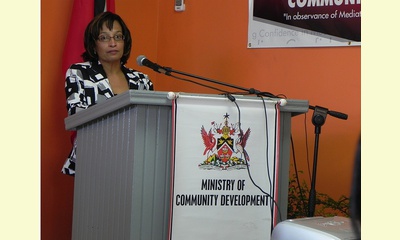|
|
Trinidad and Tobago: Students told to create a culture of peace in classrooms
un article par Trinidad Express
“You can take what you have learnt during this Peer Mediation Camp
and use it to create a culture of peace and harmony in your
classrooms.” This was the advice given by Permanent Secretary of
the Ministry of Community Development, Ms Donna Ferraz as she
addressed 71 students from both primary and secondary schools at
a Graduation Ceremony held at the Couva/Roystonia Community
Centre on Friday August 15, to mark the end of the Peer Mediation
Camp 2014. 
Donna Ferraz
click on photo to enlarge
The Peer Mediation Camp was hosted by the Community Mediation
Services Division of the Ministry during the period August 11th –
15th, 2014 at the Presto Praesto Youth Facility in Freeport. The
students were exposed to various disciplines including anger
management, communication and listening skills on how to create a
win/win situation.
Executive Director of the Community Mediation Programme, Ms
Beverly Harry-Emmanuel expressed heartfelt appreciation to the 51
volunteers who supported the initiative by giving of their time and
expertise “Towards Building a Better Trinidad and Tobago.”
|








|
DISCUSSION
Question(s) liée(s) à cet article:
What is the best way to teach peace to children?,
* * * * *
Commentaire le plus récent:
Maria Montessori believed that peace was innate within children. Her timeless educational philosophy was developed around this basic understanding. Perhaps all we need to do as teachers is to provide stimulating learning environments that validate this knowing and understanding and nurture it. We may not have to actually teach it, Sharing peace-building stories gently attends to this. Strong, creative and imaginative peace-building characters who focus upon win-win and have faith in peace being possible are at the centre of the story plots. In Hassaun Ali-Jones Bey's (Boundless Gratitude http://boundlessgratitude.com/products.html ) unique and mesmerising story, Black Ink is such a character who bravely crosses the universe seeking validation of what he knows in his heart. The magical character also models all the important peace-building values, understandings and actions needed for peace-building. I believe also that peace-building must be modelled and the whole teaching-learning environment should reflect similar values, understandings and actions...as is the primary focus of the Save the Children Australia UN Global Peace School Program upon which I am presently fortunate to be working. . ... continuation.

|
|









